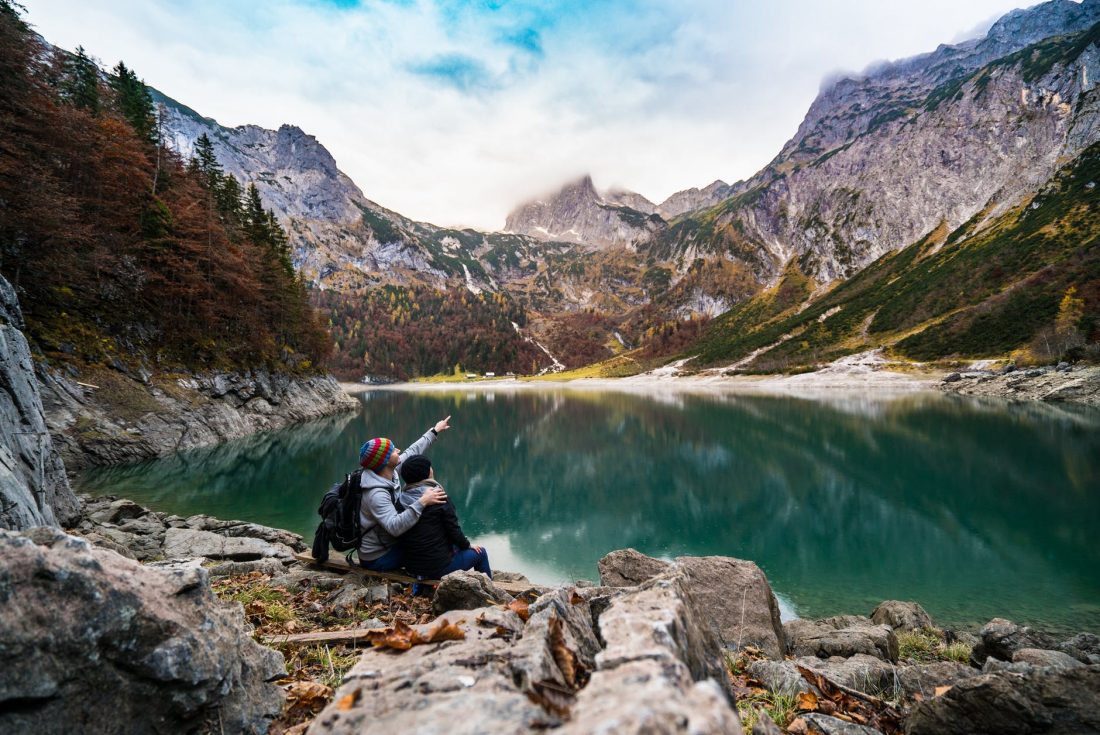Enjoying nature in a corona-proof way
In spring-like weather, people looking for recreation feel the increasing urge to go outside – what are the possibilities to prevent cyclists and hikers from meeting on the same paths? Key partner DSFT discovers the possibilities to enjoy nature in a corona-proof way.
“Stay inside!” Clearly – this is certainly the best epidemiological prerequisite to contain corona. Yet – many people do not stay at home but populate the recreational areas.
Threatening cabin fever and sunny weather lure people outside. When the daily struggle for toilet paper is over, one can go for a walk or a bicycle ride. It’s quite important to strengthen your immune system, isn’t it? And at some point, only doing office work at home makes you feel cooped up. The city centres are no longer hip, shops and restaurants may open again, but still under strict conditions. Instead, Germany’s local recreation areas are becoming more frequented again.
The only problem is that if everyone outside is roaming along the same paths, the risk of infection increases again, and this threatens to tighten the initial regulations. So how can outdoor recreation traffic be somewhat disentangled and the risk of infection minimized? All this, of course, within the legal framework and while taking into account the latest findings.
Apart from that, something else becomes clear. It is about competences of the future. This requires important digital skills, which are crucial in the NTG project. In particular to outdoor activities, there will be a higher need for skills in the choice and application of the right digital tools (e.g. OpenStreetMap) for planning and publication of biking routes and hiking tracks or for visitor management (visitor counting, allocation, use of online booking tools etc.).
Corona-correct trips?
All in all, a corona-influenced consciousness of movement and encounter seems to have arrived. Walkers avoid each other with distance. Some turn their head away when you approach. Perhaps it would be useful to develop some specific movement advice and approach the user groups accordingly. Anyone who approaches other people from behind as a faster road user, whether as a jogger, cyclist, or rider, should draw attention to oneself. Let’s be honest – this would also make sense in non-corona times. The neckerchief could be seen as a protection against droplets – at the moment, such a “masking” shows respect for others and on top of that helps wearers not to constantly touch their face.
The problem: the ‘“trendsetter” is missing
Cyclists and hikers, who used to enjoy travelling in groups, now have no one to develop tours for them and no one to follow. They will probably choose routes that they already know or where orientation is easy. But there, everyone will walk and bike. These users, in particular, are probably grateful for instructions on how to make trips safe and easy.
Apps and route planner: Invert routing criteria
Confiding in the familiar smartphone navigation seems rather suboptimal in corona times. This is because common outdoor apps such as Komoot or Strava suggest routes that are preferably frequented: the more users there are on the road, the more attractive they appear to the routing software. Other tour portals are also currently looking in vain for corona-compatible trips. In corona times, however, exactly the contrary is required: to guide users along routes where few other people as possible are on the move. One of the first major portals that has responded to this problem is Outdooractive – with comprehensive tips for activities in corona times, also for families, or to strengthen the immune system.
Planning is better than spontaneous navigation
As long as the app providers do not allow adequate routing, it seems better to prepare trips on the computer at home. This can be done, for example, by using the state-specific route planners on the internet, as offered by many German states such as North Rhine-Westphalia, Hesse, Thuringia, etc. As far as we know, however, even these planning tools do not currently offer any help for the present situation. And it can be assumed that this is not planned in the short term. That stands to reason because the programming of new features does not happen overnight.
Tour portals: regional providers and tourism experts are in demand
Perhaps it is precisely now that the tourism destinations have an initiating role to play. Tourists who know the area well could now increasingly recommend routes which, from experience, are not so frequently used. They could work out and provide special tour suggestions and also offer online advice. Private regional tour portals could also become involved. These often have a user community that can react very quickly to find, comment on, and improve offers. There will probably be a particularly high demand for shorter tours in the densely populated areas: short arrival, short tours, but relaxing.
Plan “B”: use less attractive routes
The question remains on how to plan suitable tours yourself. If you know the route networks in your region, you can help yourself with the usual planning tools such as the internet portals. In our opinion, the online tool BRouter is particularly suitable: it can be used free of charge and without registration, already has corona-compatible routing functions and can be configured individually.
With BRouter, you can have the signposted cycle and hiking routes displayed as individual layers and get numerous alternatives to the long-distance cycle and main hiking routes at one go. Conclusion: use the “B” routes.
….or even plan away from the signposted routes
If you want to avoid signposted cycle routes as far as possible, you should try the BRouter profile “Trekking bike (ignore cycle routes)”. As the name suggests, this profile looks for connections suitable for trekking bikes but avoids signposted routes if possible. After some first attempts, the app works surprisingly well but depends on the quality of the respective OpenStreetMap data (OSM). Like many outdoor routing programs, BRouter also uses the OSM data for route calculation, where signposted paths, private routes or path quality are not sufficiently recorded in all regions.
Off- route, there is a significantly higher risk of failure, because with signposted routes it is more likely to assume that these routes are legal and accessible throughout. But also that is not guaranteed even with the best route planners.
Corona routing criteria: boring is now the trump
So what could a corona-appropriate route look like? The first thing to do is to avoid the highly frequented routes, especially cycling and walking routes along waterways, through urban parks, and green areas. Wide paths are preferable because there you can meet each other at a distance, narrow paths are also popular with mountain bikers. Racing cyclists are also to be expected on asphalt paths – so it is better to use unpaved paths. Thus, the unloved “forest highways” – the wide, paved but not asphalted forest paths, which are considered boring by hikers and mountain bikers – are given a new value in corona times.
Off the beaten track
This contribution comes at a time when the number of infections and deaths in Germany is still increasing. What is very important to us: it is not based on scientific findings or studies, but on numerous conversations and personal observations. We can only hope that this contribution will soon be of no further significance. Perhaps it can later simply serve the nature users who want to work out route suggestions away from the mainstream.
Link: https://www.pocketnavigation.de/2020/03/routing-in-den-zeiten-von-corona/
The author: Thomas Froitzheim, Founder of Naviso Outdoornavigation
Naviso means “Navigation Solutions” and offers solutions for outdoor navigation with a focus on cycling and hiking. Users can plan their own tours precisely on the computer and then find any route without getting lost – without ever having been there before. The service offers elaborate GPS tours that can be saved, edited, and provided for other users.
The founder of Naviso, Thomas Froitzheim, brings with him a wealth of experience in cartography, cycling and hiking tourism, and outdoor navigation. From 1990 to 2007, he was head of the map editing department at the Bielefeld publishing house BVA, the market leader in Germany for cycle touring maps and literature, where he was responsible for digital cartography, GPS and GIS applications, among other things. In July 2007 he founded Naviso Outdoor Navigation. In addition, Thomas Froitzheim supports the German Cyclists’ Club ADFC e.V. and works closely with cycle travel experts in this field. www.naviso.de




No Comments